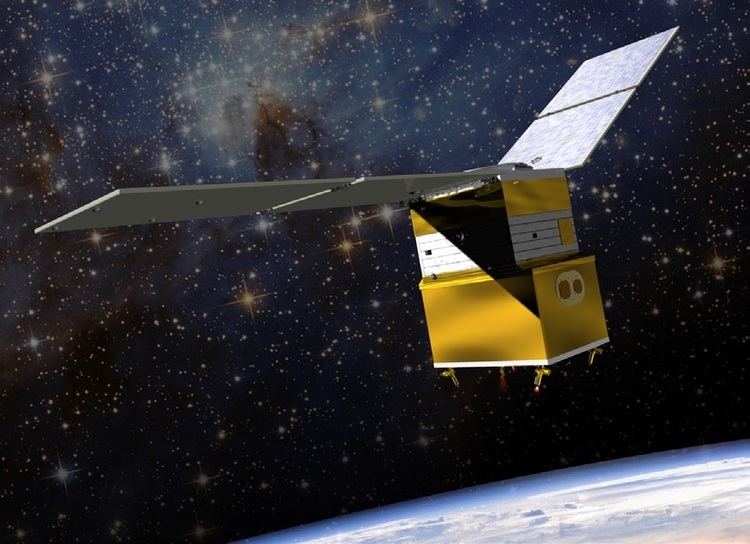Bus BCP-100 BOL mass ≤180 kg (400 lb) | Mission duration Two months Manufacturer Ball Aerospace | |
 | ||
Mission type | ||
The Green Propellant Infusion Mission (GPIM) is a planned NASA technology demonstrator project that will test a less toxic and higher performance/efficiency chemical propellant for next-generation launch vehicles and spacecraft. When compared to the present high-thrust and high-performance industry standard for orbital maneuvering systems, which for decades, have exclusively been reliant upon toxic hydrazine based propellant formulations, the "greener" Hydroxylammonium nitrate(HAN) monopropellant may offer many advantages for future satellites, including longer mission durations, additional maneuverability, increased payload space and simplified launch processing. The GPIM is managed by NASA's Marshall Space Flight Center in Huntsville, Alabama, and is part of NASA's Technology Demonstration Mission Program within the Space Technology Mission Directorate.
Contents
The Green Propellant Infusion Mission is scheduled to launch aboard a SpaceX Falcon Heavy rocket in 2017, on a test mission called Space Test Program 2 (STP-2). The cost of the program is projected to be approximately $45 million.
Propellant
The propellant for this mission is hydroxylammonium nitrate (NH3OHNO3) fuel/oxidizer blend, also known as AF-M315E. Preliminary data indicates that it offers nearly 50% higher performance for a given propellant tank volume compared to a conventional monopropellant hydrazine system. The Green Propellant Infusion Mission seeks to improve overall propellant efficiency while reducing the toxic handling concerns associated with the highly toxic propellant hydrazine. The new propellant is an energetic ionic liquid. Ionic liquids are salt compounds in a liquid form whose molecules have either a positive or negative charge, which bonds them together more tightly and makes the liquid more stable.
This new propellant is also expected to be significantly less harmful to the environment. It is called a "green" fuel because when combusted, AF-M315E transforms into nontoxic gasses. The AF-M315E propellant, nozzles and valves are being developed by the Air Force Research Laboratory (AFRL), Aerojet Rocketdyne, and Glenn Research Center, with additional mission support from the U.S. Air Force Space and Missile Systems Center and NASA's Kennedy Space Center.
Satellite
The GPIM system will fly aboard the small Ball Configurable Platform 100 (BCP 100) spacecraft bus. Aerojet Rocketdyne is responsible for the development of the propulsion system payload, and the technology demonstration mission will employ an Aerojet-developed advanced monopropellant payload module as the sole means of on-board propulsion.
Scientific payload
The Defense Department's Space Experiments Review board has selected three payloads to be hosted aboard GPIM:
Applications
Once proven in flight, the project will present AF-M315E and compatible tanks, valves and thrusters to NASA and the commercial spaceflight industry as "a viable, effective solution for future green propellant-based mission applications." According to NASA, the new propellant will be an enabling technology for commercial spaceports operating across the U.S. "permitting safer, faster and much less costly launch vehicle and spacecraft fuel loading operations." The combined benefits of low toxicity and easy open-container handling will shorten ground processing time from weeks to days, simplifying the launching of satellites. The new AF-M315E fuel is 45% denser than hydrazine, meaning more of it can be stored in containers of the same volume. It also has a lower freezing point, requiring less spacecraft power to maintain its temperature.
In addition to its use on lighter satellites and rockets, the fuel's exceptional volumetric storage properties is also being assessed for military uses such as missile launches.
